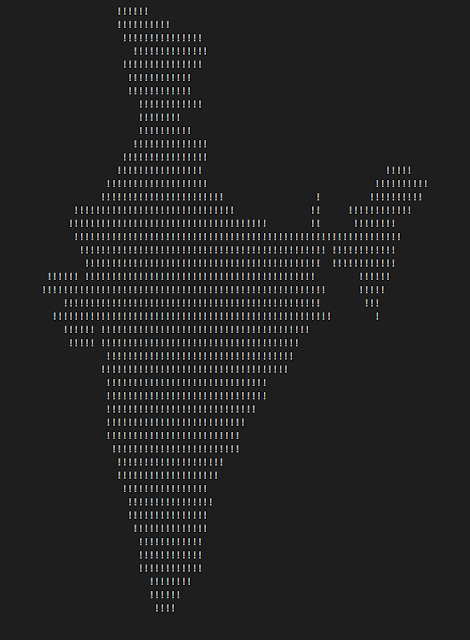C is very powerful language even you can create your own OS in C like Unix. This post is not about to create new OS but the India’s map using C language. You will be glad just few lines of code can create India’s map.
The long string is simply a binary sequence converted to ASCII. The first for statement makes bstart out at 10, and the [b+++21] after the string yields 31. Treating the string as an array, offset 31 is the start of the "real" data in the string (the second line in the code sample you provided). The rest of the code simply loops through the bit sequence, converting the 1's and 0's to !'s and whitespace and printing one character at a time.
#include <stdio.h>
main()
{
int a,b,c;
int count = 1;
for (b=c=10;a="- FIGURE?, UMKC,XYZHello Folks,\
TFy!QJu ROo TNn(ROo)SLq SLq ULo+\
UHs UJq TNn*RPn/QPbEWS_JSWQAIJO^\
NBELPeHBFHT}TnALVlBLOFAkHFOuFETp\
HCStHAUFAgcEAelclcn^r^r\\tZvYxXy\
T|S~Pn SPm SOn TNn ULo0ULo#ULo-W\
Hq!WFs XDt!" [b+++21]; )
for(; a-- > 64 ; )
putchar ( ++c=='Z' ? c = c/ 9:33^b&1);
return 0;
}
And here is the output
How it works?
The long string is simply a binary sequence converted to ASCII. The first for statement makes bstart out at 10, and the [b+++21] after the string yields 31. Treating the string as an array, offset 31 is the start of the "real" data in the string (the second line in the code sample you provided). The rest of the code simply loops through the bit sequence, converting the 1's and 0's to !'s and whitespace and printing one character at a time.

No comments:
Post a Comment